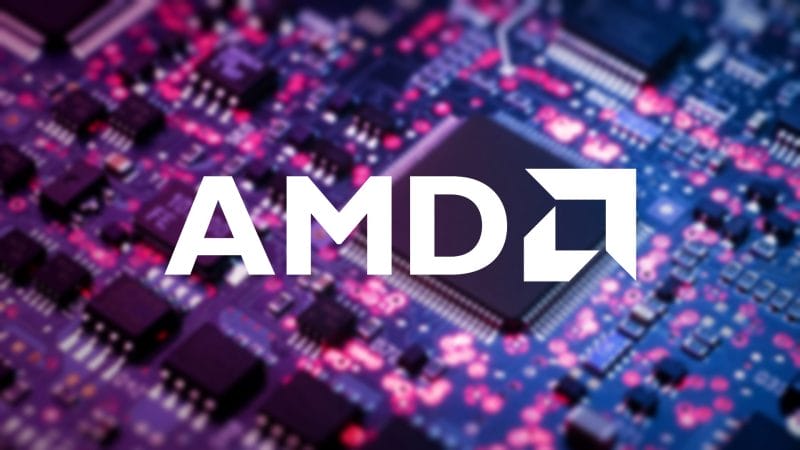Supercomputers: A New Frontier

- $163.331B Market Capitalization
Advanced Micro Devices Inc. (AMD.Q) turned some heads today after the Frontier Test & Development System (TDS) was crowned No. 1 on the GREEN500 list. For context, the GREEN500 list is a biannual ranking of supercomputers. As you probably could have guessed from the name, the GREEN500 list ranks the top 500 supercomputers in terms of energy efficiency.
The Frontier TDS boasts 120,832 total cores and an HPL benchmark of 19.2 peta floating-point operations per second (PFLOPS/s). There are a few terms to cover here but let’s start with the measurement, FLOPS/s. Put simply, FLOPS/s is a measurement of the number of floating-point calculations a computer can perform per second. The more FLOPS per second, the better.
To put things into perspective, a one PFLOP computer system is capable of performing one quadrillion floating-point operations per second. Moving on, an HPL benchmark refers to the High-Performance Linpack benchmark. As defined by HPL, the HPL benchmark involves using “code to solve a uniformly random system of linear equations” to measure a computer’s FLOPS/s.
TOP500
Results generated using the HPL benchmark can then be submitted to the TOP500. Speaking of which, the original Frontier secured No. 1 on the TOP500 list and No. 2 on the GREEN500 list, just behind the Frontier TDS. Both systems were developed by the Oak Ridge National Laboratory (ORNL) in the United States (US).
To provide some background, the ORNL represents the world’s premier research institutions and is sponsored by the US Department of Energy (DOE). The Frontier TDS is almost identical to the Frontier system, however, the Frontier is comprised of 8,730,112 cores compared to the Frontier TDS’ 120,832. Furthermore, the Frontier boasts an improved HPL benchmark of 1.102 exa FLOPS/s (EFLOPS/s).
Unlike the GREEN500, the TOP500 list ranks the most powerful, non-distributed computer systems in the world. To summarize, the GREEN500 focuses on energy efficiency while the TOP500 focuses on raw power. With this in mind, ORNL has secured first place on both lists via its Frontier TDS and Frontier systems.
Breaking Barriers
On May 7, 2019, the DOE announced a contract valued at more than $600 million with Cray Inc. to build the Frontier supercomputer at ORNL. In addition to Cray’s Shasta architecture and Slingshot interconnect, the Frontier computer features Advanced Micro Devices’ AMD EPYC CPU and AMD Radeon Instinct GPU technology.
“This announcement represents the power of collaboration between private industry and public research institutions to deliver groundbreaking innovations that scientists can use to solve some of the world’s biggest problems,” said Lisa Su, AMD President and CEO.
According to the 59th edition of the TOP500 list, the latest iteration, the Frontier system is based on the latest HPE Cray EX235a architecture and is equipped with AMD EPYC 64C 2GHz processors. In total, the Frontier system has a power efficiency rating of 52.23 gigaflops per watt and relies on gigabit ethernet for data transfer.
With this in mind, the Frontier system utilizes AMD’s third-generation AMD EPYC CPUs, which are optimized for High-Performance Computing (HPC) and Artificial Intelligence (AI). In addition to the Frontier system, AMD’s CPUs are used in the No. 3 LUMI, No. 7 Permutter, and No. 8 Selene systems. As previously mentioned, the Frontier system has an HPL benchmark of 1.102 EFLOPS/s.

That being said, the Frontier system has surpassed the 1 exaflop barrier. This makes it the most powerful supercomputer in existence and the first true exascale machine. Previously, No. 1 was dominated by the Fugaku system at the RIKEN Center for Computational Science (R-CCS) in Kobe, Japan. Compared to the Frontier system, Fugaku is only able to achieve an HPL benchmark score of 442 PFLOPS/s.
The Future
In terms of physical composition, the Frontier system is comprised of 9400 CPUs and 37,000 GPUs. Given its size, the Frontier system is housed in 74 separate cabinets where the supercomputer performs a number of parallel computing tasks. Furthermore, the Frontier system generates so much heat that high-power pumps are required to push over 25,000 liters of water around the machine every minute.
“We are excited that AMD EPYC processors and AMD Instinct accelerators power the world’s fastest, most energy-efficient, and the first supercomputer to break the exascale barrier,” said Forrest Norrod, Senior Vice President and General Manager, Data Center Solutions Group, AMD.
Ultimately, supercomputers have piqued the interest of many industries, including military and defense. For example, in November 2021, Atos and the CEA’s Military Applications Division (CEA/DAM) implemented the EXA1 supercomputer, which has 12,960 AMD processors. As a whole, the global supercomputer market is expected to reach USD$14 billion by 2026.
This market is projected to expand at a compound annual growth rate of 16.2% from a value of USD$5.6 billion in 2020. Supercomputers are unique in the sense that they can be applied to a variety of sectors, including biotechnology, medicine, material design, energy, and advanced manufacturing. As such, companies like AMD and Nvidia will likely benefit from the growth of this market.

AMD’s share price opened at $102.13 today, up from a previous close of $101.86. The Company’s shares were down -1.30% and were trading at $100.59 as of 1:24 PM EST.



